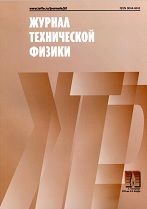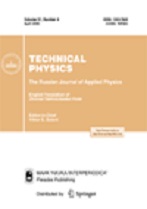|
This article is cited in 1 scientific paper (total in 1 paper)
Physical science of materials
Thermal oxidation of a carbon condensate formed in high-frequency carbon and carbon–nickel plasma flow
G. N. Churilovab, N. S. Nikolaevab, A. V. Cherepakhinb, A. I. Dudnikab, E. V. Tomashevichc, M. V. Trenikhind, N. G. Bulinae
a L. V. Kirensky Institute of Physics, Siberian Branch of the Russian Academy of Sciences, Krasnoyarsk
b Siberian Federal University, Krasnoyarsk
c Institute of Chemistry and Chemical Technology SB RAS, Krasnoyarsk
d Institute of Hydrocarbons Processing of SB RAS, Omsk, Russia
e Institute of Solid State Chemistry and Mechanochemistry, Siberian Branch of the Russian Academy of Sciences, Novosibirsk
Abstract:
We have reported on the comparative characteristics of thermal oxidation of a carbon condensate prepared by high-frequency arc evaporation of graphite rods and a rod with a hollow center filled with nickel powder. In the latter case, along with different forms of nanodisperse carbon, nickel particles with nickel core–carbon shell structures are formed. It has been found that the processes of the thermal oxidation of carbon condensates with and without nickel differ significantly. Nickel particles with the carbon shell exhibit catalytic properties with respect to the oxidation of nanosized carbon structures. A noticeable difference between the temperatures of the end of the oxidation process for various carbon nanoparticles and nickel particles with the carbon shell has been established. The study is aimed at investigations of the effect of nickel nanoparticles on the dynamics of carbon condensate oxidation upon heating in the argon–oxygen flow.
Received: 24.06.2017
Citation:
G. N. Churilov, N. S. Nikolaev, A. V. Cherepakhin, A. I. Dudnik, E. V. Tomashevich, M. V. Trenikhin, N. G. Bulina, “Thermal oxidation of a carbon condensate formed in high-frequency carbon and carbon–nickel plasma flow”, Zhurnal Tekhnicheskoi Fiziki, 88:2 (2018), 224–227; Tech. Phys., 63:2 (2018), 216–219
Linking options:
https://www.mathnet.ru/eng/jtf5993 https://www.mathnet.ru/eng/jtf/v88/i2/p224
|


| Statistics & downloads: |
| Abstract page: | 36 | | Full-text PDF : | 21 |
|



 Contact us:
Contact us: Terms of Use
Terms of Use
 Registration to the website
Registration to the website Logotypes
Logotypes